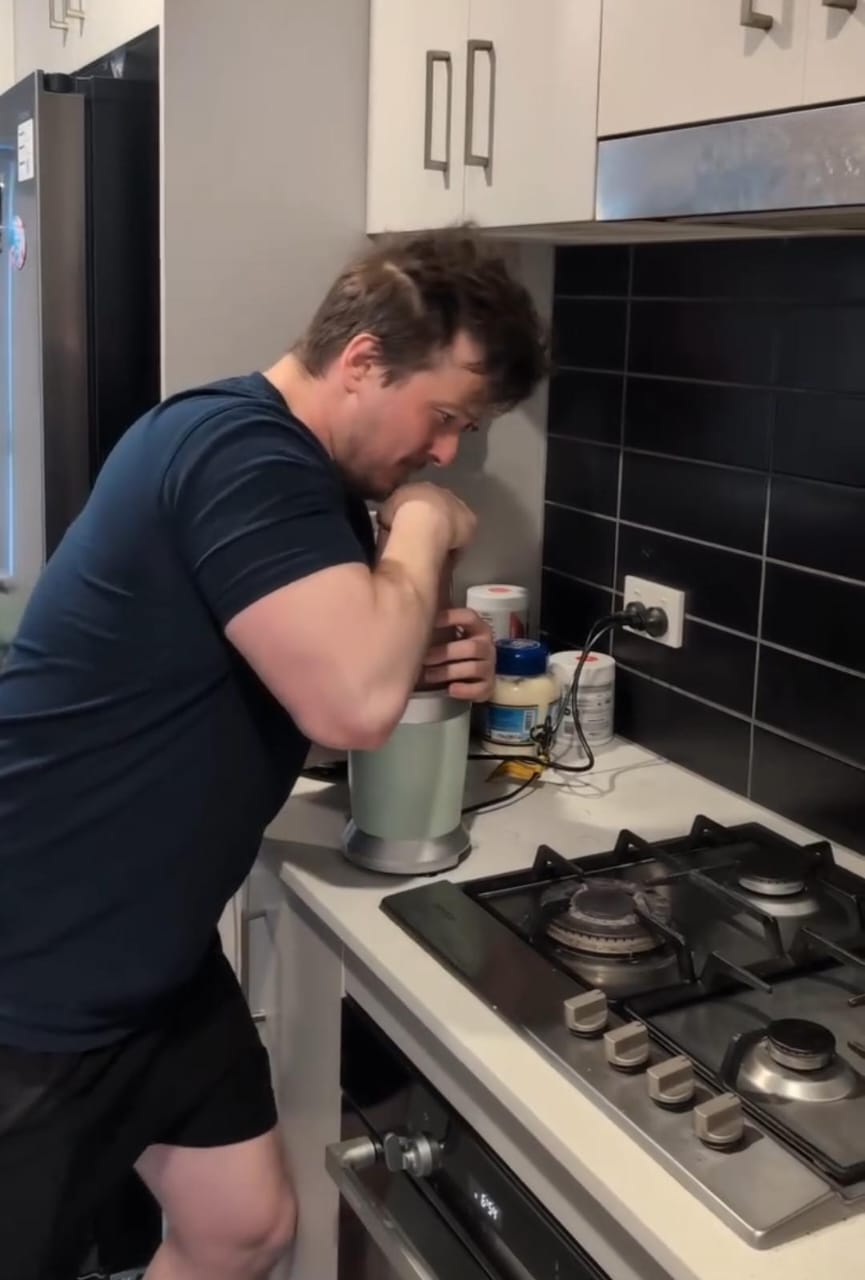A few weeks before their prom king's death, students at an Ohio high school had attended an assembly on narcotics that warned about the dangers of heroin and prescription painkillers. But it was one of the world's most widely accepted drugs that killed Logan Stiner -- a powdered form of caffeine so potent that as little as a single teaspoon can be fatal.The teen's sudden death in May has focused attention on the unregulated powder and drawn a warning from federal health authorities urging consumers to avoid it. "I don't think any of us really knew that this stuff was out there," said Jay Arbaugh, superintendent of the Keystone Local Schools.The federal Food and Drug Administration said Friday that it's investigating caffeine powder and will consider taking regulatory action. The agency cautioned parents that young people could be drawn to it. An autopsy found that Stiner had a lethal amount of caffeine in his system when he died May 27 at his home in LaGrange, Ohio, southwest of Cleveland.
Stiner, a wrestler, had more than 70 micrograms of caffeine per milliliter of blood in his system, as much as 23 times the amount found in a typical coffee or soda drinker, according to the county coroner. His mother has said she was unaware her son took caffeine powder. He was just days away from graduation and had planned to study at the University of Toledo.Caffeine powder is sold as a dietary supplement, so it's not subject to the same federal regulations as certain caffeinated foods. Users add it to drinks for a pick-me-up before workouts or to control weight gain.A minuscule amount packs a punch. A mere 1/16th of a teaspoon can contain about 200 milligrams of caffeine, roughly the equivalent of two large cups of coffee. That means a heaping teaspoon could kill, said Dr. Robert Glatter, an emergency physician at Lenox Hill Hospital in New York.The powder is almost impossible to measure with common kitchen tools, the FDA said. "The difference between a safe amount and a lethal dose of caffeine in these powdered products is very small," FDA spokeswoman Jennifer Dooren said.Glatter said he's seen several younger patients experience complications from caffeine in the last few months. Some arrive with rapid heart rates. "They're starting to latch onto the powders more because they see it as a more potent way to lose weight," Glatter said.Health officials worry about caffeine powder's potential popularity among exercise enthusiasts and young people seeking an energy boost. Dr. Henry Spiller directs a poison control center at Nationwide Children's Hospital in Columbus, Ohio. Over a week or so this month, the center took reports of three people hospitalized for misusing caffeine powder."I can't believe you can buy this," Spiller said. "Honestly, I mean, it's frightening. It makes no sense to me."Federal investigations have recently prompted some companies to pull products with added caffeine. Last year, Wrigley halted sales and marketing of Alert caffeinated gum after discussions with the FDA. In 2010, the agency forced manufacturers of alcoholic caffeinated beverages to cease production of those drinks.Authorities have also pledged to take action if they are able to link deaths to consumption of energy drinks. Hospitalizations from those drinks have been on the rise. The number of emergency department visits involving energy drinks doubled -- from 10,068 visits in 2007 to 20,783 visits in 2011, according to the federal Substance Abuse and Mental Health Services Administration. Most of the cases involved teens or young adults.A full teaspoon of caffeine powder could contain 3,200 milligrams of caffeine. In that concentrated amount, a person can experience adverse effects in a matter of minutes, said Dr. Bob Hoffman, a New York University medical toxicologist. The brain becomes alert, then agitated and confused. The heartbeat picks up and can become dangerously irregular. A person can suffer nausea, vomiting and potentially a seizure."The thing about caffeine is just because you see it every day, just because it's naturally occurring -- it comes from a plant -- doesn't mean that it's safe," Hoffman said.Back in Ohio, the superintendent of the district where Stiner attended school plans to take steps of his own. He wants to add the dangers of caffeine powder to drug and alcohol awareness programs.Top Photo: File photo shows Keystone High School wrestler Logan Stiner, top, during a match in Sheffield Village, Ohio. A recent autopsy found that the 18-year-old Stiner had a lethal amount of caffeine in his system when he died May 27, 2014. (AP Photo/The Chronicle Telegram, Steve Manheim)
Stiner, a wrestler, had more than 70 micrograms of caffeine per milliliter of blood in his system, as much as 23 times the amount found in a typical coffee or soda drinker, according to the county coroner. His mother has said she was unaware her son took caffeine powder. He was just days away from graduation and had planned to study at the University of Toledo.Caffeine powder is sold as a dietary supplement, so it's not subject to the same federal regulations as certain caffeinated foods. Users add it to drinks for a pick-me-up before workouts or to control weight gain.A minuscule amount packs a punch. A mere 1/16th of a teaspoon can contain about 200 milligrams of caffeine, roughly the equivalent of two large cups of coffee. That means a heaping teaspoon could kill, said Dr. Robert Glatter, an emergency physician at Lenox Hill Hospital in New York.The powder is almost impossible to measure with common kitchen tools, the FDA said. "The difference between a safe amount and a lethal dose of caffeine in these powdered products is very small," FDA spokeswoman Jennifer Dooren said.Glatter said he's seen several younger patients experience complications from caffeine in the last few months. Some arrive with rapid heart rates. "They're starting to latch onto the powders more because they see it as a more potent way to lose weight," Glatter said.Health officials worry about caffeine powder's potential popularity among exercise enthusiasts and young people seeking an energy boost. Dr. Henry Spiller directs a poison control center at Nationwide Children's Hospital in Columbus, Ohio. Over a week or so this month, the center took reports of three people hospitalized for misusing caffeine powder."I can't believe you can buy this," Spiller said. "Honestly, I mean, it's frightening. It makes no sense to me."Federal investigations have recently prompted some companies to pull products with added caffeine. Last year, Wrigley halted sales and marketing of Alert caffeinated gum after discussions with the FDA. In 2010, the agency forced manufacturers of alcoholic caffeinated beverages to cease production of those drinks.Authorities have also pledged to take action if they are able to link deaths to consumption of energy drinks. Hospitalizations from those drinks have been on the rise. The number of emergency department visits involving energy drinks doubled -- from 10,068 visits in 2007 to 20,783 visits in 2011, according to the federal Substance Abuse and Mental Health Services Administration. Most of the cases involved teens or young adults.A full teaspoon of caffeine powder could contain 3,200 milligrams of caffeine. In that concentrated amount, a person can experience adverse effects in a matter of minutes, said Dr. Bob Hoffman, a New York University medical toxicologist. The brain becomes alert, then agitated and confused. The heartbeat picks up and can become dangerously irregular. A person can suffer nausea, vomiting and potentially a seizure."The thing about caffeine is just because you see it every day, just because it's naturally occurring -- it comes from a plant -- doesn't mean that it's safe," Hoffman said.Back in Ohio, the superintendent of the district where Stiner attended school plans to take steps of his own. He wants to add the dangers of caffeine powder to drug and alcohol awareness programs.Top Photo: File photo shows Keystone High School wrestler Logan Stiner, top, during a match in Sheffield Village, Ohio. A recent autopsy found that the 18-year-old Stiner had a lethal amount of caffeine in his system when he died May 27, 2014. (AP Photo/The Chronicle Telegram, Steve Manheim)
Advertisement










